Creators, Makers, and Doers: Richard Young
Posted on 12/6/17 by Brooke Burton
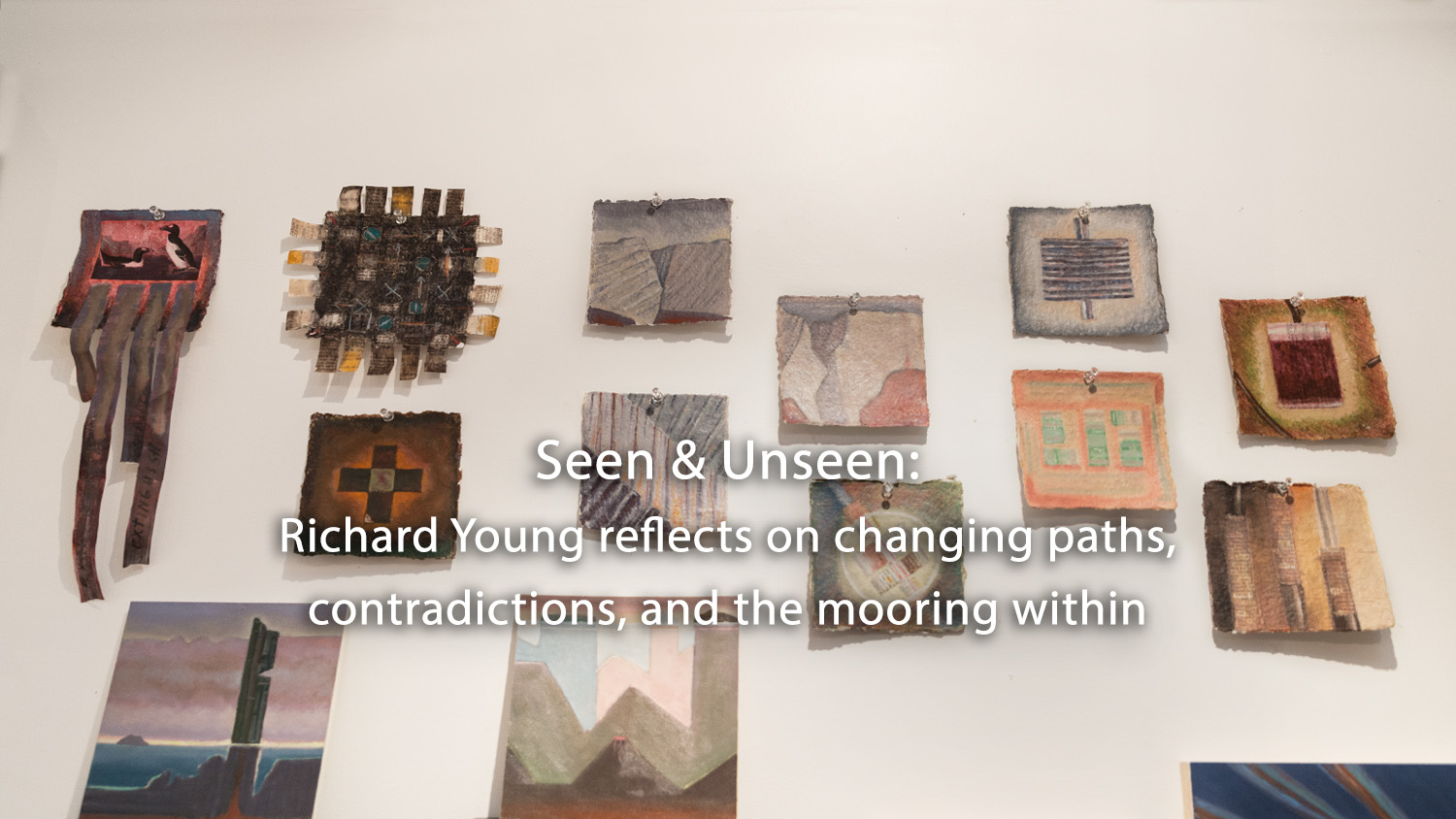
Interview & Photography by Brooke Burton ©Boise City Department of Arts & History
Richard Young is a painter and art educator that has been a consistent and notable force in the Boise art community since the late 70’s. His most recent body of paintings, called Mapping the Unknown, references glaciers, volcanic activity, and subtle medical imagery carried over from previous work. Richard invited me to his two level studio designed as a dual workspace for himself and his late wife Cheryl Shurtleff who was sadly not able to use it before her death. He speaks about a loss of structure and digging deep to find his mooring within: a solid, unassuming understanding of people and a desire to help. He uses the musical term “riffing” to describe his latest writing and painting, an intuitive way to follow his internal thread, without expectations of where it will lead.
You recently came back from a residency in Iceland! Where exactly?
Skagaströnd, on the northern peninsula, a town of two-hundred-and-fifty people. Everybody was in an old fish factory and I was working in an open studio, there were no private studios, which was important and kind of interesting, right? Because as an artist, you know, “Oh, $#*!, open studio.”
“People are going to see me organizing and not working!”
Yeah, exactly right. You’ll see me listening or doing whatever I’m doing. We concentrated on our work, but we were all in an open space, so there was interaction. Iceland is an interesting place. By the time I left, there was 22.5 hours of daylight.
What did you do at night? How do they sleep?
Just blackout blinds. One time I was coming home from the studio at 12:30 or one o’clock in the morning and there were kids playing outside. It was quiet and they’re in this little village, so it’s very safe and they were hanging out outside.
At 1am! But what is the flip side of the lightest part of the year?
You get the twenty-four hours of dark. There is this sort of year-round cycle that I missed. There are places in Iceland that are really phenomenally beautiful, in little fishing villages, one called Seydisfjordur which was an amazing artists’ community but also a quaint village. But, once every couple of weeks, an enormous ferry boat, ten stories high, would come into the harbor and hundreds and hundreds of cars would come off of the ferry and drive out. So it’s another land of contradictions [laughs], but it’s an interesting place.
Would you ever live there?
I don’t know if I’d really want to do that or not. I liked the land, certainly—I barely scratched the surface of exploring. We didn’t get into the interior at all, to the glaciers, and there’s some really intriguing people that live there. The land often motivates my work and motivates my desire to live in one location or another, that’s what’s kept me in Idaho for so long, the outdoors. When I was in Upper Michigan, it was this incredibly beautiful place on Lake Superior, which I really enjoyed.
Do you miss that?
Yeah, it’s an amazingly beautiful place. Lake Superior—there’s corollaries to Iceland because it’s very cold. It’s the coldest inland lake with the winds coming down from Canada, it was ice and high winds and snow.
Is that where you grew up?
I grew up in suburban Michigan, outside of Detroit, and moved here in 1976 for school. My dad was a graphic designer, an art director for a magazine, so I was doing art when I was eleven or twelve. My dad, you know, shoved a pile of paints in my hand and gave me Magic Markers.
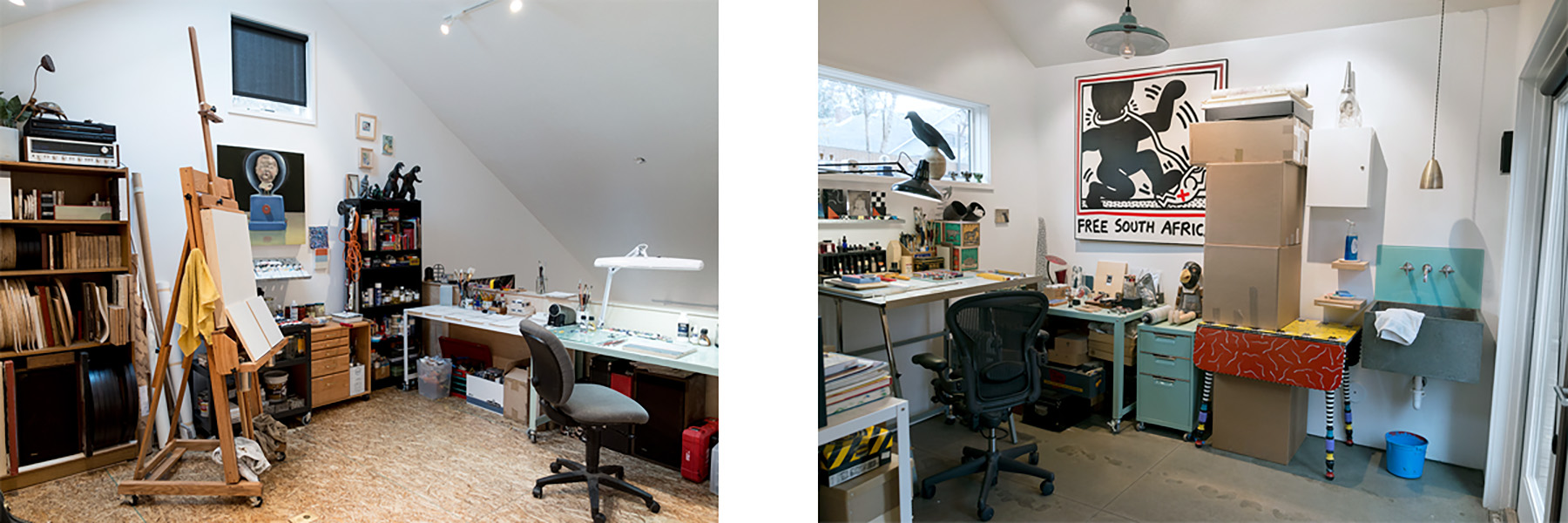 Yes, I do that—I give my kids much nicer paints than Crayola water colors, but I’m somehow surprised that a six-year old doesn’t appreciate the quality.
Yes, I do that—I give my kids much nicer paints than Crayola water colors, but I’m somehow surprised that a six-year old doesn’t appreciate the quality.
I did that with my dad, because he gave me really nice Magic Markers that he used for his work and I would leave the tops off and they’d dry out. I had no idea how much they cost until I actually went to buy a whole set and it was close to a hundred and eighty dollars, which I didn’t have when I was twenty-six. [Laughs]. I used them for a while when I was living in Eugene. Cheryl and I lived in Eugene for two years so I bought them to do work over there. I just bought a whole set of a hundred and seventy-two. Studio markers, they were called, from Boise Blue art supplies.
Oh, I miss that place. I really do. Did you go back and tell your dad, “Sorry I left all those tops off”?
I did, as well as ruin his wood chisels that he got from his grandfather, they had wooden handles. Of course, I used them with a hammer to chop out something and split all the wood to pieces. I did apologize for that. I ruined a lot of my dad’s stuff, actually. But I think that goes hand-in-hand with parenthood.
It sure does. I bet he also ruined his dad’s supplies.
I would imagine he did, he was a very good craftsman, he was very good at building things and he painted also and would do typesetting and color correction on printing, he was—he was meticulous.
How about your mom?
She’s ninety-three—my mother was mostly a housewife and a bookkeeper. She did all the books and worked for various companies when we got older. She was more of a financial person. She was also sort of a social progressive in Detroit and Michigan, it was the time of the Detroit riots, both of them grew up in inner city Detroit, but they’d moved to the suburbs
And you have a brother?
I have one brother who went to a philosophy and political science degree—he was a police officer for many years, so that’s where he applied it basically, into being a very fair-minded and just police—he was one of the more progressive cops.
He had degrees in very cerebral subjects, but found jobs where he could apply it. He must be a doer?
He is a doer. He’s very much of a doer.
What are you? A doer or a thinker?
I’m a doer. [Laughs] I like to keep busy doing things and making things.
Do you have nervous energy?
Some people would say I have a lot of nervous energy. I think it comes in handy. Sometimes the stereotype for an artist is that they have a lot of patience, I have patience but I’m also impatient with certain things.
What are you impatient with?
I have a hard time listening to stories—people telling long stories. I grow impatient and, sort of, “What’s your point?” as opposed to listening and immersing myself in the story. When I was chair of the Art Department, I was somewhat impatient with endless discussions. I was more interested in getting things done. I would allow people to talk, but at the end I would say, “Okay, let’s decide what we’re going to do here.” If I’m not doing art, I play guitar. And if I’m not doing that, then I’m working on different house projects, then I’m going fishing. It allows me to focus and contemplate. It seems like a contradiction that when you’re making stuff, you’re thinking.
Your mind frees up because your hands are busy?
Right, exactly, yes.
I understand you are retiring from being a professor at Boise State? Is that officially announced?
In May, yes, it is official.
You have worn so many hats in the arts community and you have served a lot of people: students, faculty, children, artists. Did you play a role like that growing up—can you look back and say, “You know what? I really like people.”
[Laughs] Yeah, I’ve been accused of that. I think I do like people. With the different jobs that I’ve had over the years, I’ve grown to appreciate people in different ways than I did when I was probably sixteen to twenty-four, because I was very shy and introverted and I never thought I was going to be teaching or standing in front of people or leading a group. A couple of things helped with that [shyness.] One was getting out of graduate school, you know, where you are sort of just a recluse essentially, hiding out in your studio.
 A little bit raw?
A little bit raw?
Raw, and a little bit beaten down. But to sit in a studio and do your work and then come out of that cloistering and be engaged in complex discussions— I started work teaching, doing art workshops for children in the fourth through sixth grade, and participated in a program called the ArtReach Bus which took this converted school bus full of art supplies around to elementary schools. That was the perfect thing to do [after graduation] because you go off into your head pretty heavily in graduate school, so it brought me back down to earth and forced me to communicate and be an extravert. I think I discovered that I did have a certain charisma, the entertainer side of me kept them engaged.
It fed part of you?
It fed me as well as gave to them, so, it really fed me. I did that for two years. Then I eventually became the Curator of Education at the [Boise Art] Museum. It’s a big generalization, but at least a certain percent of artists are usually somewhat [shut in] and part of that is necessary to make the work, right?
Being an artist can be very solitary work—
You spend a lot of time by yourself. Traditionally, it’s a solitary activity.
We need to list all the hats you’ve worn in the art community. I’ve been going through them in my head, but there’s too many! Professor, gallery director, commissioner, art department chair—
Member at large for the Idaho Commission on the Arts.
Curator of Education at the Boise Art Museum, and of course artist, you had representation in Sun Valley at Ochi Gallery. Have you done everything here? If there were a survey of all the art positions, I feel you have covered them all!
I have covered them all. [Laughs] I didn’t plan it that way. That just sort of evolved. In terms of enjoying people, in addition to skills as an artist, I also had some skills as a manager of people; I worked well with people and became a good advocate for the visual arts within the city and also within the university. When you’re managing people, you want to be thoughtful and listen to people’s sides, not make snap judgments and be patient.
People do not like snap judgments.
No, it’s a way of communicating, and I think that’s what makes me a good teacher, too. I allow students to express themselves in various ways. As opposed to thinking there’s some point they have to get to in the end. I let [students] inform the process, as opposed to dictating the process.
But it is easier to dictate than to take a student-centered approach. A student-centered approach is harder and more rewarding for the students.
Absolutely. It is more difficult to evaluate and open yourself up to more complex problems than having a pre-determined path and a pre-determined outcome. If people don’t meet that outcome, they get a D or an F, so, they fail.
And maybe that’s a failure of the teacher. Do you feel you had to learn this or was it innate?
I had one of my mentor faculty tell me that you’ll either have this really prescribed project or you’ll have a more student-centered approach to teaching. I’ve been teaching for a long time, so I think it’s part of who I am.
You’re a collaborator—you’re a listener, you’re able to take in other points of view.
I am a listener, yes.
Maybe empathetic, would that be the word?
Yeah, I think that’s a word that I use quite a bit, absolutely. I’m able to listen—and open up to other people—
And allow the path to be changed?
Right, and allow that path to change, which can drive some people crazy, [laughs]—
It’s safer to stay on the map. But I think you have more meaningful experiences with open collaborations, whether personal or professional. And the work is better. You went from Detroit to Boise and earned an MA at Boise State, then an MFA at Washington State. Where did you meet your wife Cheryl?
We met here [in Boise] as graduate students in the MA program. She was married at the time and she was coming back to get an art education degree at the same time I was.
Do you have a “how we met” story?
Sure, well, we met in John Killmaster’s enameling class, and we sort of, you know, we saw each other and it was, like, “Oh!” Something was going on there. We ended up doing a master’s thesis exhibition together. We produced a brochure, which was called something like “Integrations” that was a double entendre in some ways, because we were getting more involved [romantically] by that time.
You were making artwork together and having a meeting of the minds, but there was also the subtext of—sparks flying?
Yeah, a serious chemistry.
Woo! Serious chemistry, that’s intense!
It was very exciting. But it also scared the $#*! out of me at the same time.
Really? Why?
Because she was married.
Oh, I forgot about that part.
[Laughs] Right. So, that’s part of the chemistry.
You were collaborating on art, but maybe as an excuse to spend time together?
We were drawn to one another, but at the same time there was this issue of her marriage—and me having a relationship that was carrying forward from my time in Michigan. Eventually, when I graduated in ’78, I said, “You need to take care of this and I’ll do what I’m going to do.” That [time apart] lasted a year and then I moved back and moved in. That was the way it went. [Laughs]
Sometimes people say it’s rare to have the kind of sparks you just described.
Yeah, there was an undeniable chemistry. We had a first kiss in her 1953 Nash Metropolitan, which was the first car that she ever had—so, my knees were in my chest and it was really difficult to lean over. It was just like electricity was going on.
Were you two—I just imagine you as the cool couple on campus. Like, “there goes those two cool artists.”
Yeah.
I knew it! [laughter]
And we got married when I graduated.
Obviously there’s something wonderful about partnering with a person in your same field. But what are some of the downsides?
I think the downside is certainly that if one person’s career is advancing more than the other’s, then you kind of get pissed and it’s like—
It’s kind of annoying.
When we were younger and we were applying to different exhibitions, juried exhibitions, and she’d get into some and I didn’t, or I got a fellowship and she didn’t get a fellowship, or that type of thing.
I imagine that to be a delicate situation.
[Laughs] I mean, there were certainly a lot of [positives.] You’re married to somebody who spends a lot of time working, but the plus side is that you’re together and you’re working. And that other person supports you and doesn’t put that much demand upon your time.
Because you both want to do the same thing.
Not only were we both artists, but we also worked in the same field at the same school in the same department. With that said, another downside is that we both would bring issues from work home—talk about students and faculty and do the normal thing, just normal work conversation. And at some point it was just, like, “Stop. Let’s stop this.”
“We need to find a new topic.” That’s funny. What were the good sides?
It’s somebody who shares your passion and indulges your passion, essentially. In our case, it was looking, thinking about art and allowing our lives to evolve to do the best we could.
I want to know, and this may be too big of a question, but, what are some of the things you miss the most?
I mean, she was, we worked together for thirty-six years. I miss having another artist with me along this path of life. When you’re together for a long period of time and that person’s gone, then that history is sort of—
Gone?
Gone, cast aside. You’re starting over. I think, that’s one of the reasons the paintings are of these horizon lines that are shifting from top to bottom and that they’re side views to reveal the structure of what’s underneath and what’s above. I wasn’t really doing that much critical self-reflection, so [these paintings were] more of an immersive process where I just came in and worked every day. The word I use is “riffing.”
Riffing, just doing, not thinking?
I was working through it, if you want to look at it that way. Part of it’s based on the geology of Iceland, islands that are the tops of a mountain range, underwater—what’s showing and what’s underneath or what’s revealed and what’s concealed, paradoxical ideas. The work evolved, talking about loss, but also talking about the importance of an anchor, this massive support structure underneath [the island] and all you saw was just a little bit of what was up above—and also the volcano or the thermometer, which was a carryover from the medical imagery that I was doing.
Did you find that working intuitively and less self critically—was refreshing?
Very much so. One day that I think was kind of pivotal, even though I haven’t really shared what I did with anybody really at this point in time [laughs], one morning I came to the studio and started writing an essay, which I still have and I still need to go back and finish, it is an essay called “C&I,” so Cheryl and I. It was about reflecting on the experience, from Cheryl’s perspective, since she had some writings that she left me on her computer, about her reflections of her own dying. She knew she was dying and she talked about leaving me and also about listening to the disease advance internally, listening to her lungs sound like Rice Krispies popping.
That’s uncomfortable to think about.
I incorporated that into the essay—and then I did a section on me, my perspective, acting as caregiver, and the days and weeks that followed after she passed away. Finally, I also wrote a section on its corollary to Iceland, how I looked at Iceland as a land of contradictions. Fire and ice.
Life is full of contradictions, I’m sure you look back and see them more clearly in hindsight. I’ve been wanting to ask: do you believe in an after-life?
I never really thought about it, unfortunately, until after Cheryl died. I have had her come to me twice in dreams, which has been really interesting, so I think I do, even though I’m certainly not a religious person at all, but I think something is going on [since] she has appeared in various ways. One time in a dream, there was this light that came into the room, which [is an experience] a lot of people probably have, then a sort of figure was coming towards me and I was screaming in the dream. Of course, it was probably murmuring. As the figure came closer, it was Cheryl and she said everything was going to be okay. I stopped screaming, so it [became a] comforting dream. If I was [seeing] her every week or every day, that might be different, but coming every once in a while into my psyche makes me think that there’s something going on. And I would like to think, as much of a cynic and agnostic side of me that I have, I would like to think that she is in some place where she is free of pain, because she went through so much pain in her life.
Yeah, she did. You mentioned grief therapy earlier, sometimes people can’t bring themselves to try it, but you did?
Well, every week I was reticent to go [laughs], but, “I should go.” Then when I went, I felt really good, and when I left, I felt really good, so—it always gave me insights and I met some incredibly brave women that were facing the world and going through the same thing I was going through, either through loss of a child or spouse. I have a feeling everybody that went there felt the same thing I did. It was, like, “You know, I don’t really want to go, but”—
Oh, I’m proud of you for sticking with it.
Yeah, so, it ended up being very good. My mother—when I told my mother I was going to do that, she said, “Don’t! Don’t do that! Don’t—keep it. It’s your business; don’t share it.” It’s like, “Okay, well.” [Laughs]. She thought it was a horrible idea.
Was that unexpected from her?
No, no. She—it’s family business, you know, it stays in the family.
Is she a very private person?
I think my father was the same way. He was very private. He went through World War Two, never talked about it at all. The post-war, World War II generation. My mother was very private and her parents were very private, I think it is generational. I’m not sure where we’re at now with everybody—it’s like maybe the opposite.
People over-sharing on the internet?
Right.
I would say over-sharing is trending. Maybe even we are over-sharing right now? [laughter] I’m not sure what to make of it. Do you think of yourself as transitioning?
Yeah, I am in a transition phase. There’s a lot of things that will come to me, especially when I’m no longer involved with [BSU.] I’m still dealing with the [new Fine Arts] building, so there’s still things in my consciousness going in that direction.
What’s next?
Well, that’s—that’s why I titled this show “Mapping the Unknown”, because I’m not really sure, but I want to bring the attention back to my own work and see where that can lead, and also these residencies, which I’m very intrigued by, so I’m going to apply again; I’d like to do one a year if I can.
Did you have any performance anxiety about doing the residency?
I did have anxiety, but I don’t think I showed it really.
Do you think you would be more comfortable the second time around?
Yeah, I think it gave me more confidence and helped to regain or reestablish some sort of structure. Or come to the realization that there is a structure, even though it was pulled out from under me.
Is it like finding your footing?
Yeah, I think so. You know, the mooring. There is some sort of internal mooring that exists that remains of who I am after [laughs] having a shared identity for so many years. If that makes any sense at all.
It makes a lot of sense and it’s very introspective. Do you plan to keep working intuitively?
Yeah, I’m in the serious worker mode of just doing. I want to do another twenty paintings by the time I retire. See where it leads.
Do you usually set a goal for a number of paintings like that?
Never.
You had written about addressing psychological and philosophical dilemmas in your work; I love that because it might be a way to look at a dilemma without having to make a choice about it.
That’s true. I was mostly talking about images of cultural identity with Godzilla, stereotypical images, and science fiction. But I think now the work has underpinnings of identity, loss of self, reconstituting the self. There was this thread, right, who I am, that was evident when I was twenty-two and it was evident when I was thirty-two and it was evident when I was sixty-two.
And how would you describe that thread?
Part of it is based on my own investigations of who I am and my empathetic tendencies; my interest in the development of people: emotional, psychological, philosophical. One of the best things I did was to realize that I had certain strengths that I could bring to helping other people. I’m also interested in advancing art within the institutions and within culture and within all sorts of aspects of society. I think that’s the broadening thing; one of the major developments in me. I don’t think I can all of the sudden revert to just an artist who’s going to hang out in the studio and do work and sell art.
I agree, it really stood out to me when you spoke about retirement, it wasn’t just going off and doing your own thing; you talked about maybe facilitating some art therapy, like you will never stop looking for ways to serve people. I just have one more question: if you could go back in time and tell yourself anything at any age, what would you say?
Hmmm. Go back and tell myself anything? “Don’t be so hard on yourself.” [Laughs] I think that probably comes from my mother. That’s the best way I can say it, “Try not to be so hard on yourself, because things do change—time passes. Live life.”
Good words. I’m glad she shared that.
North End
December 5, 2017
Creators, Makers, & Doers highlights the lives and work of Boise artists and creative individuals. Selected profiles focus on individuals whose work has been supported by the Boise City Dept. of Arts & History.
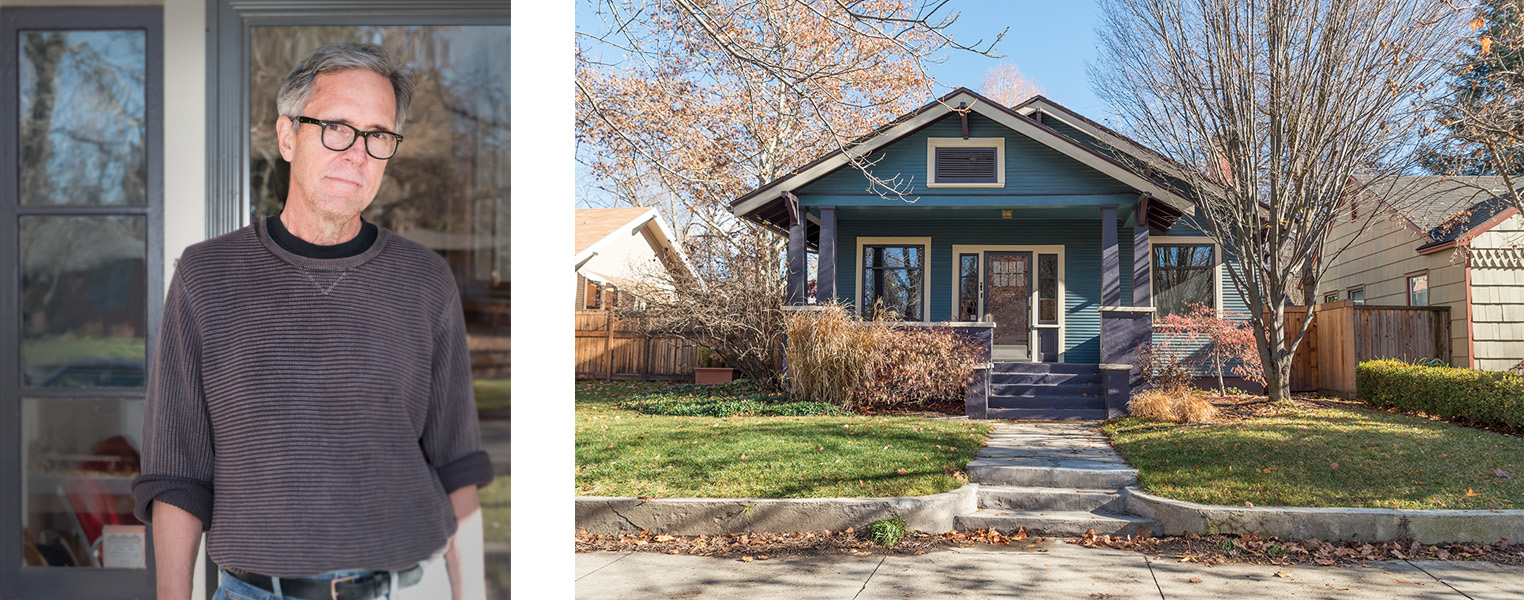
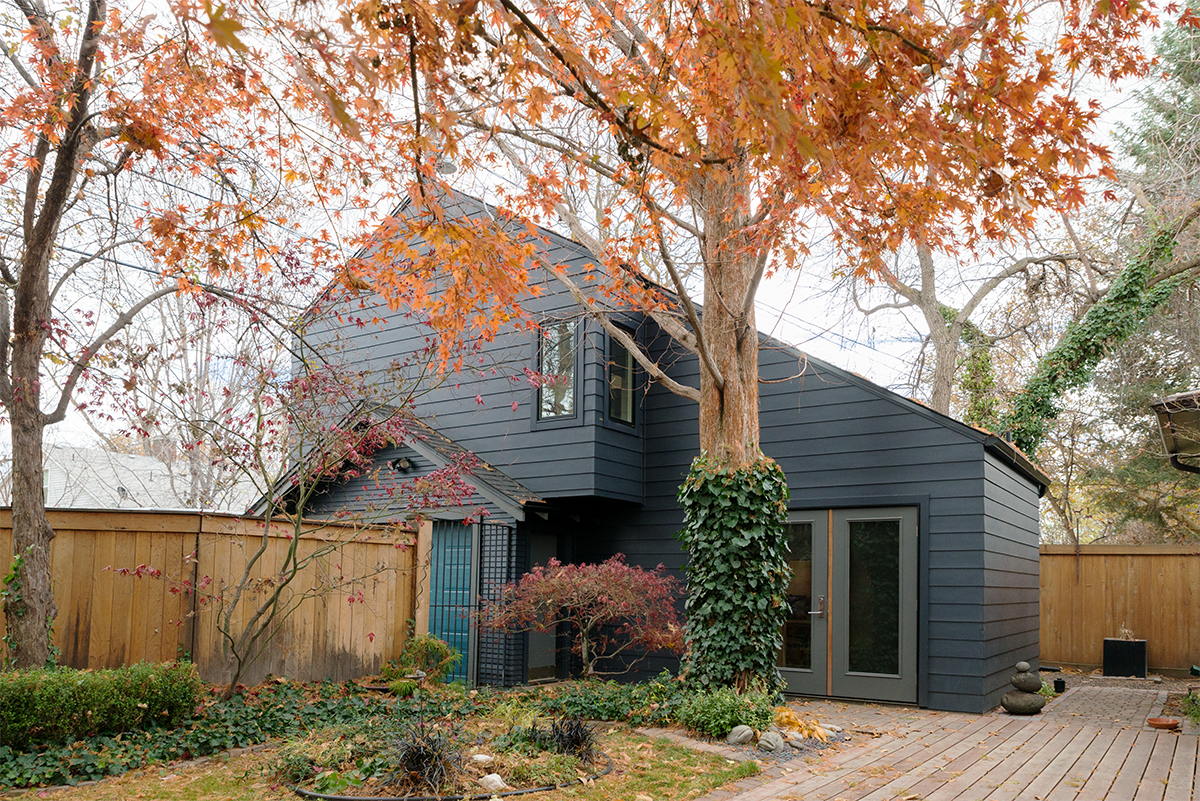
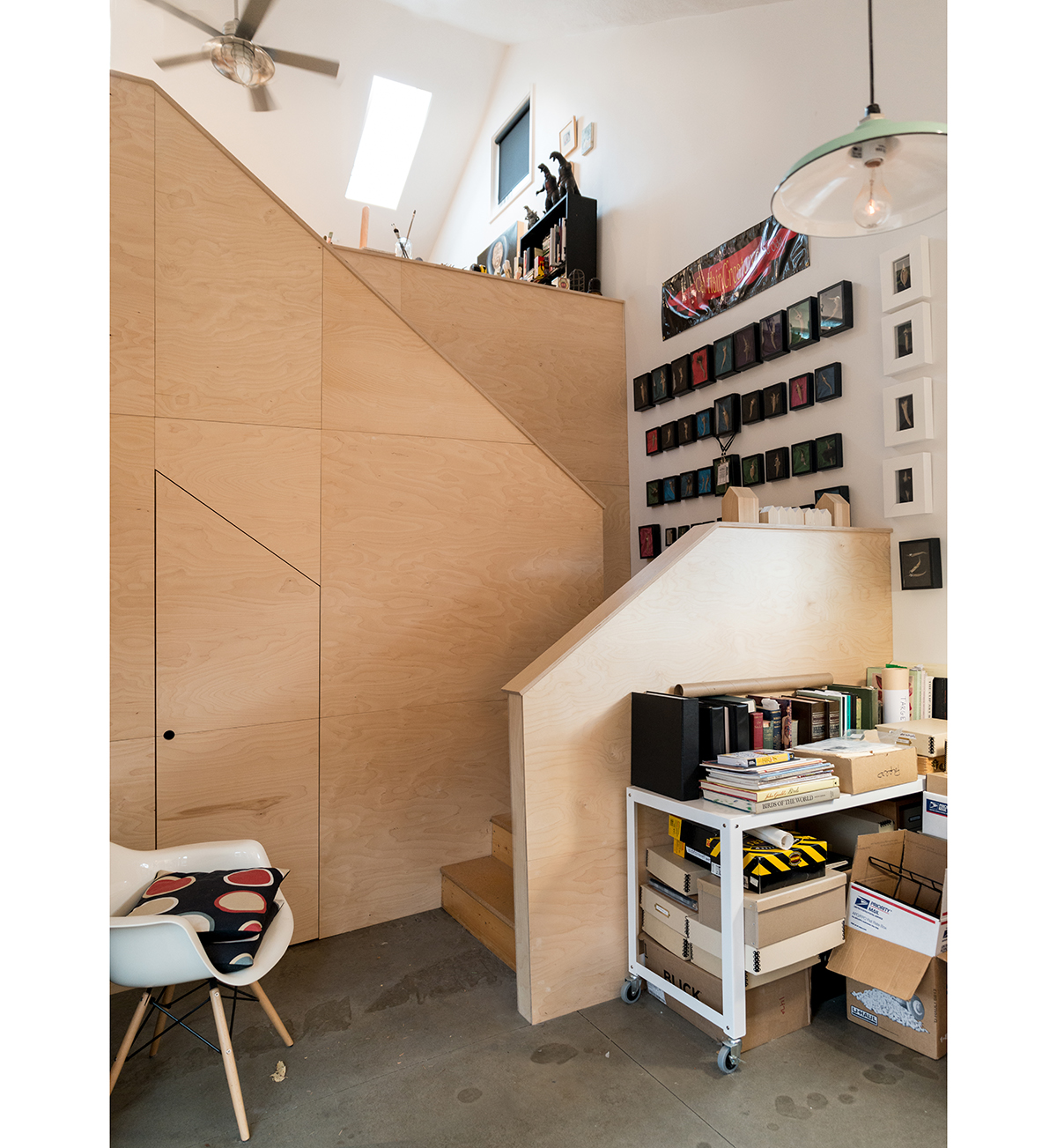
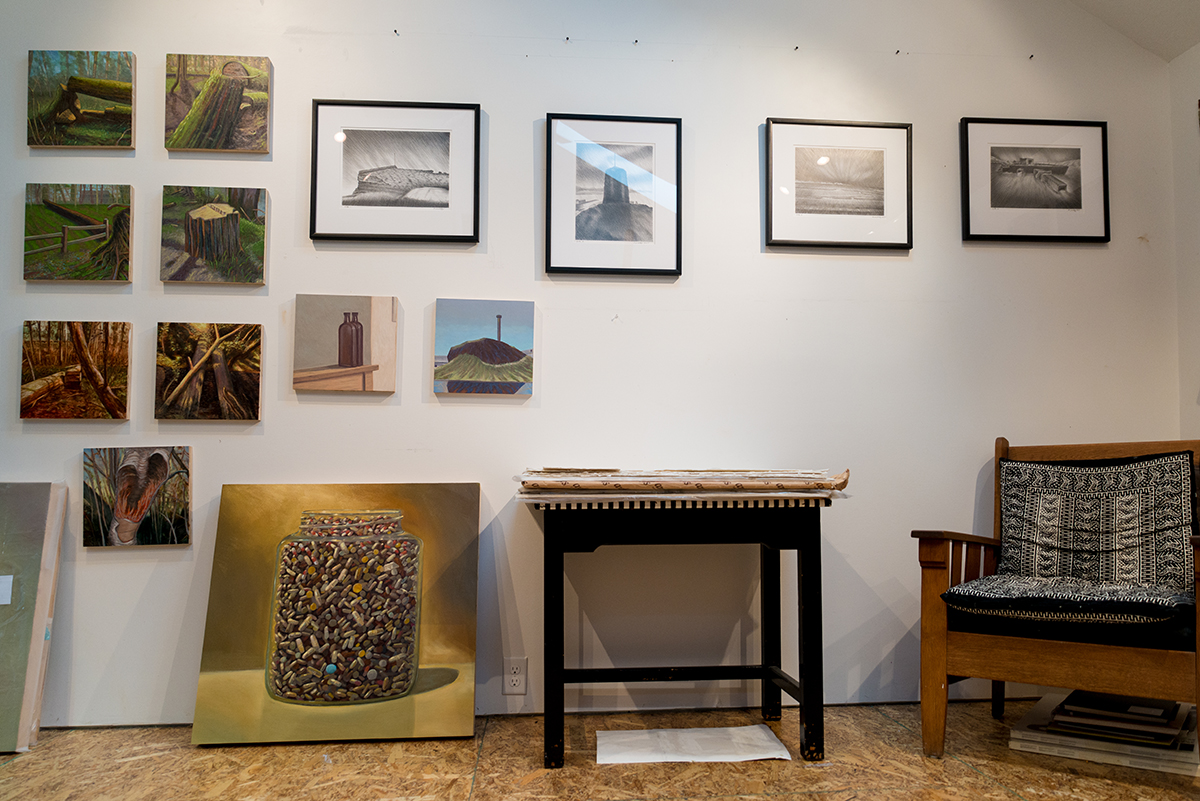
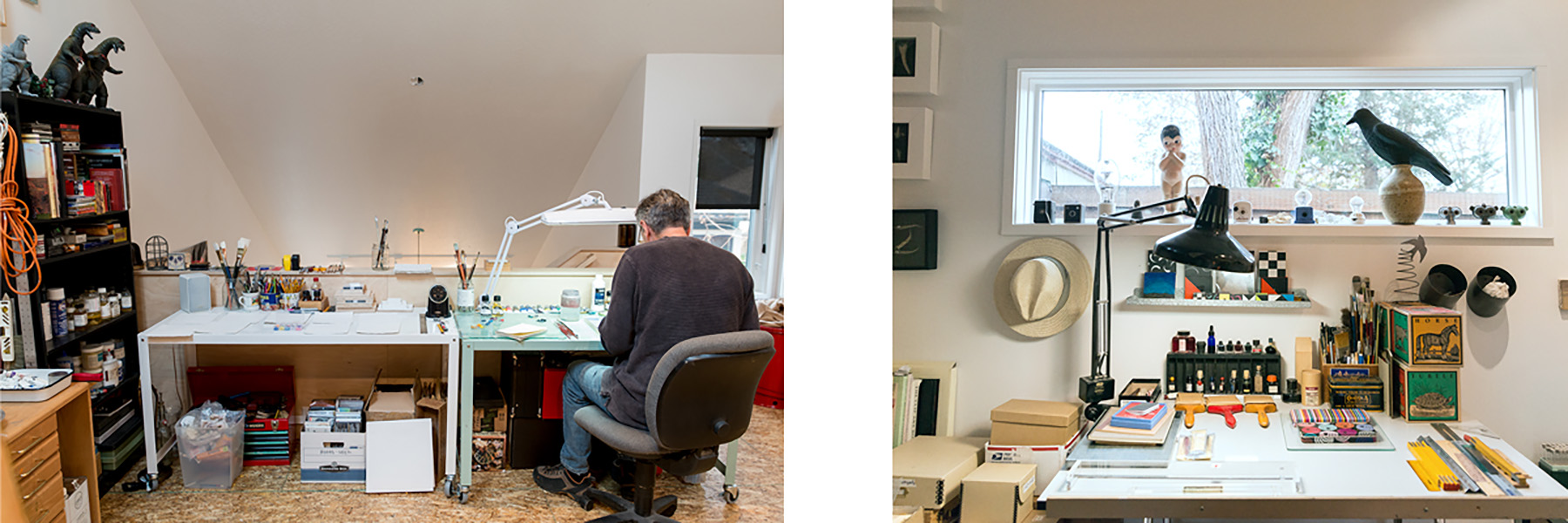
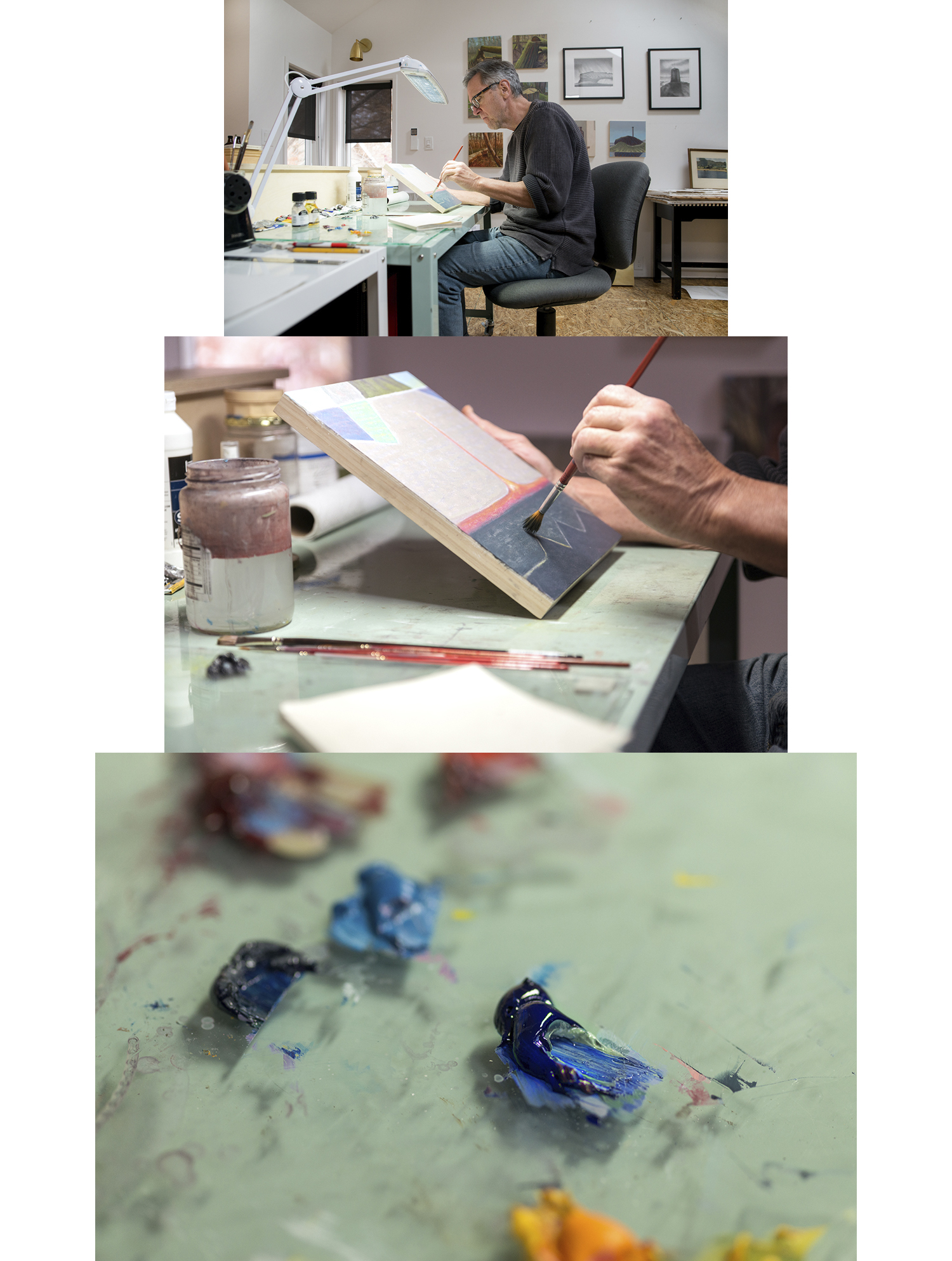
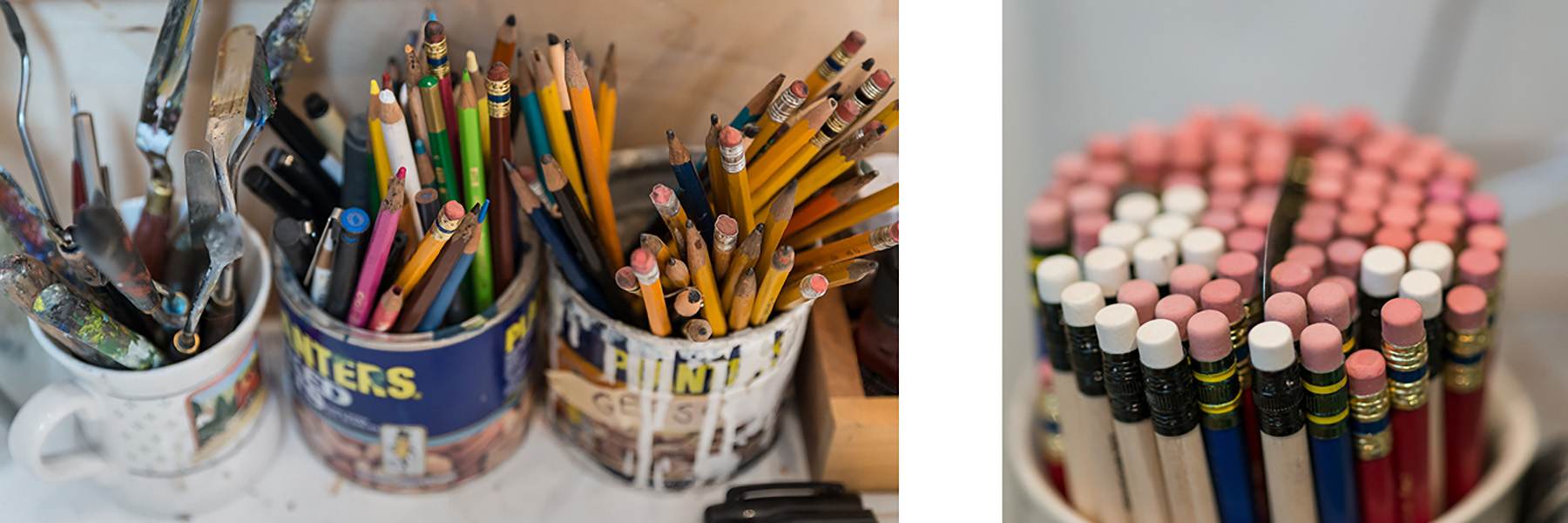
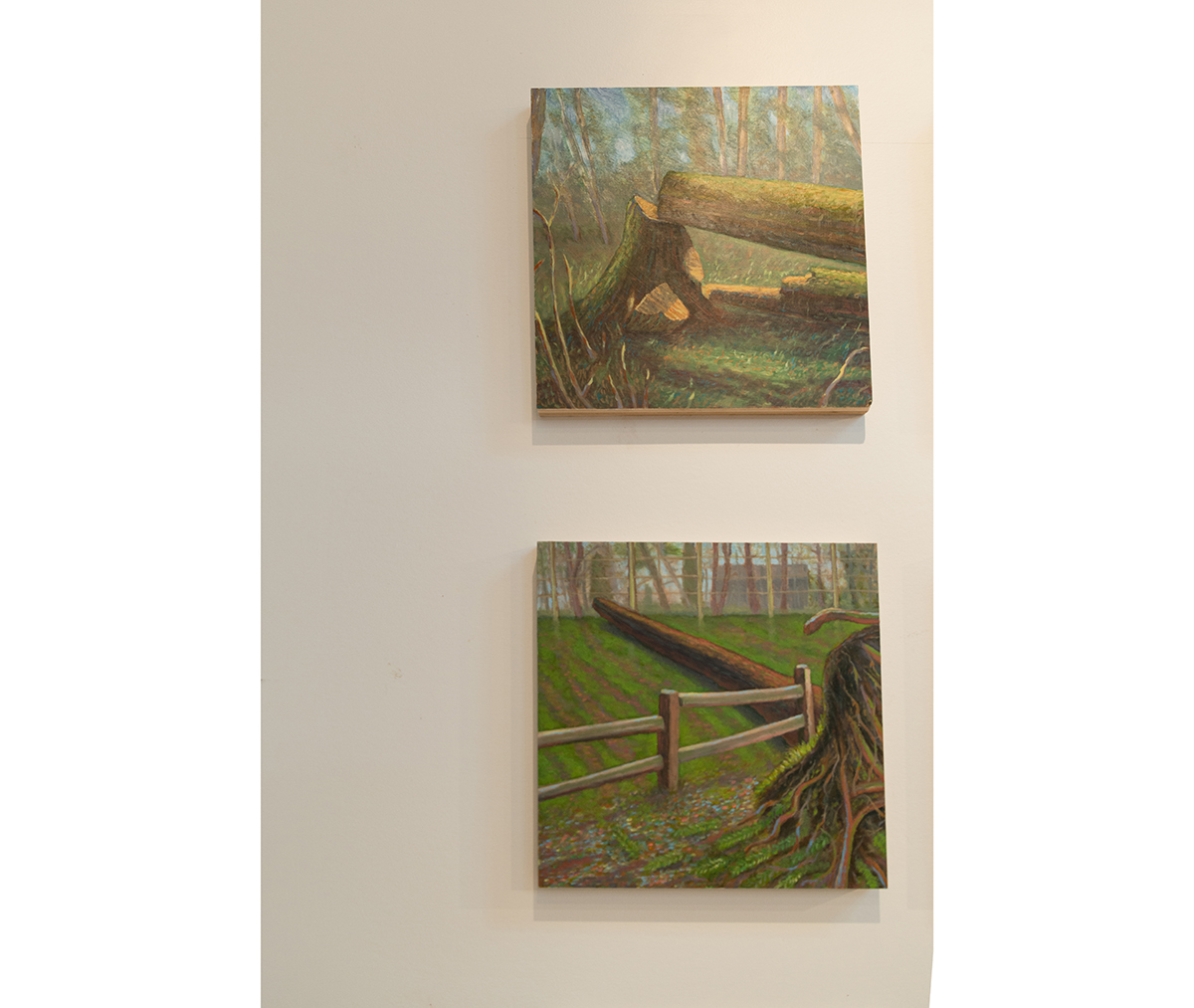
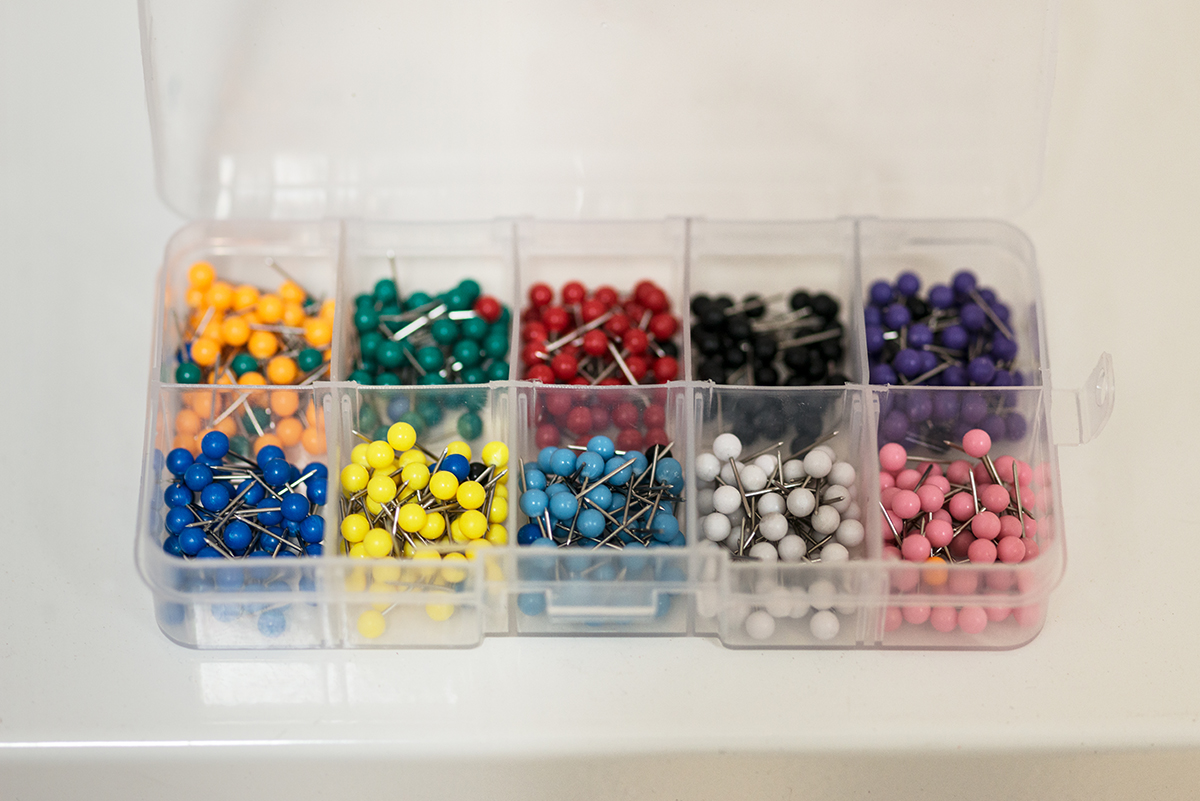
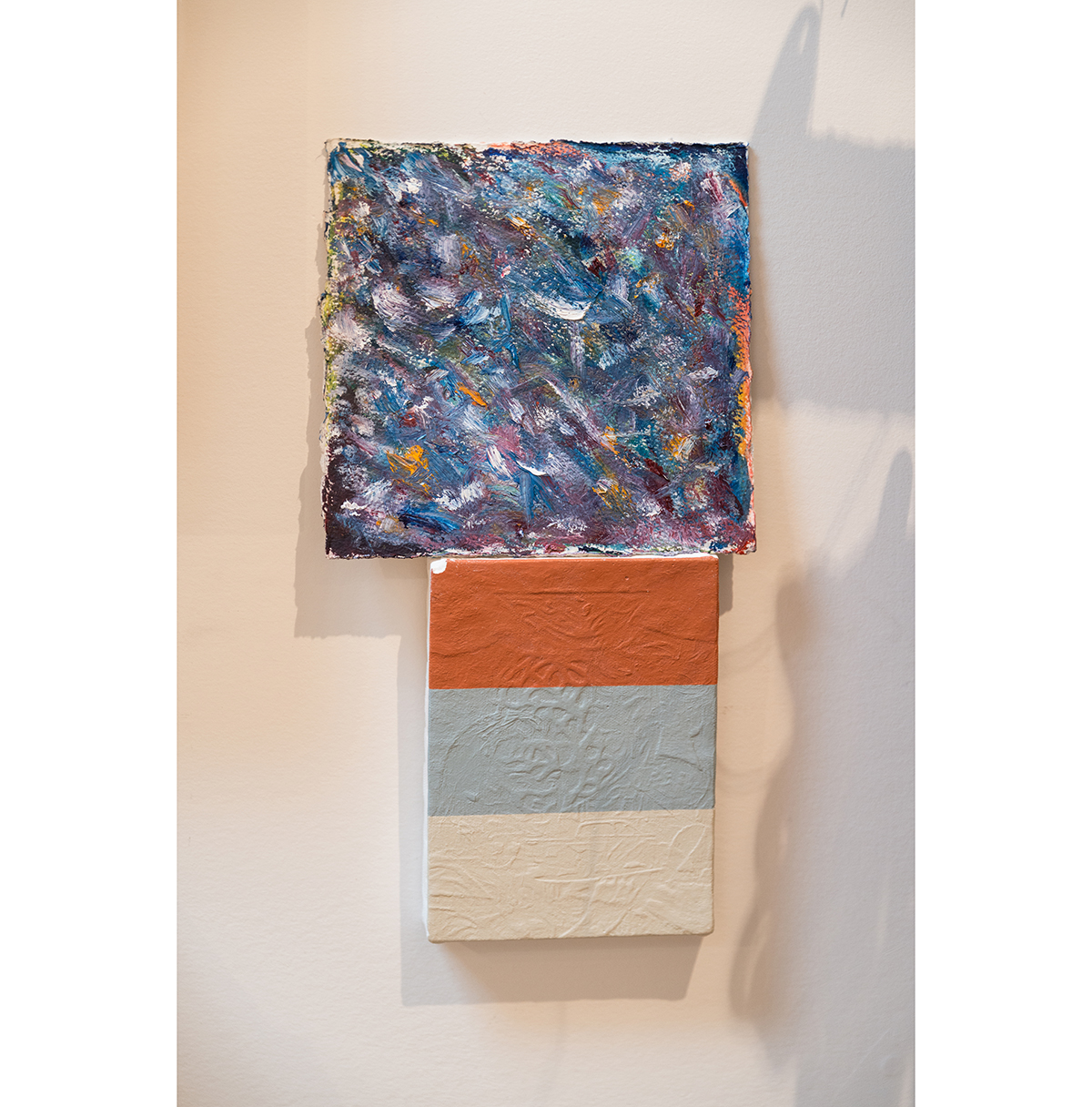
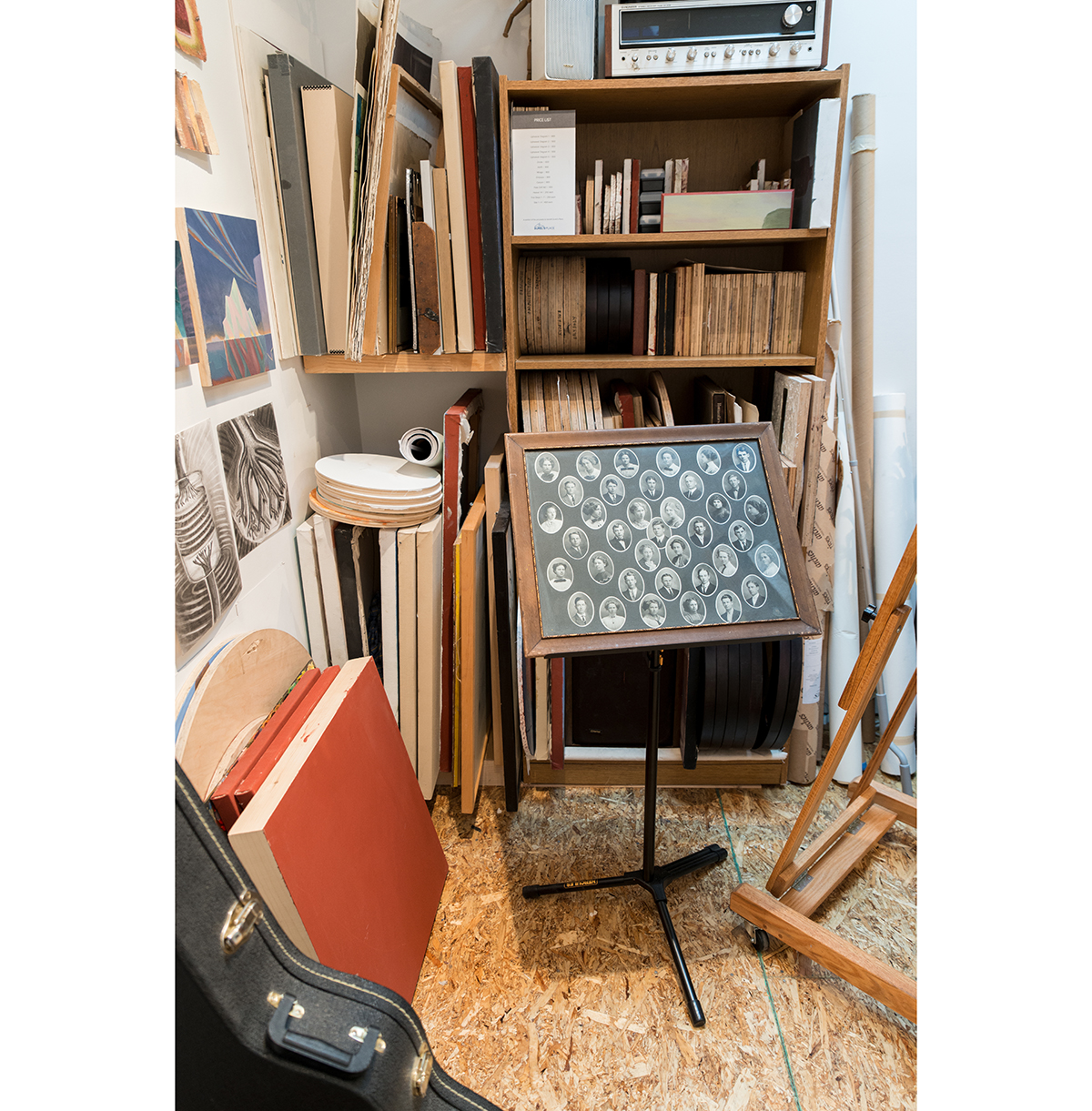
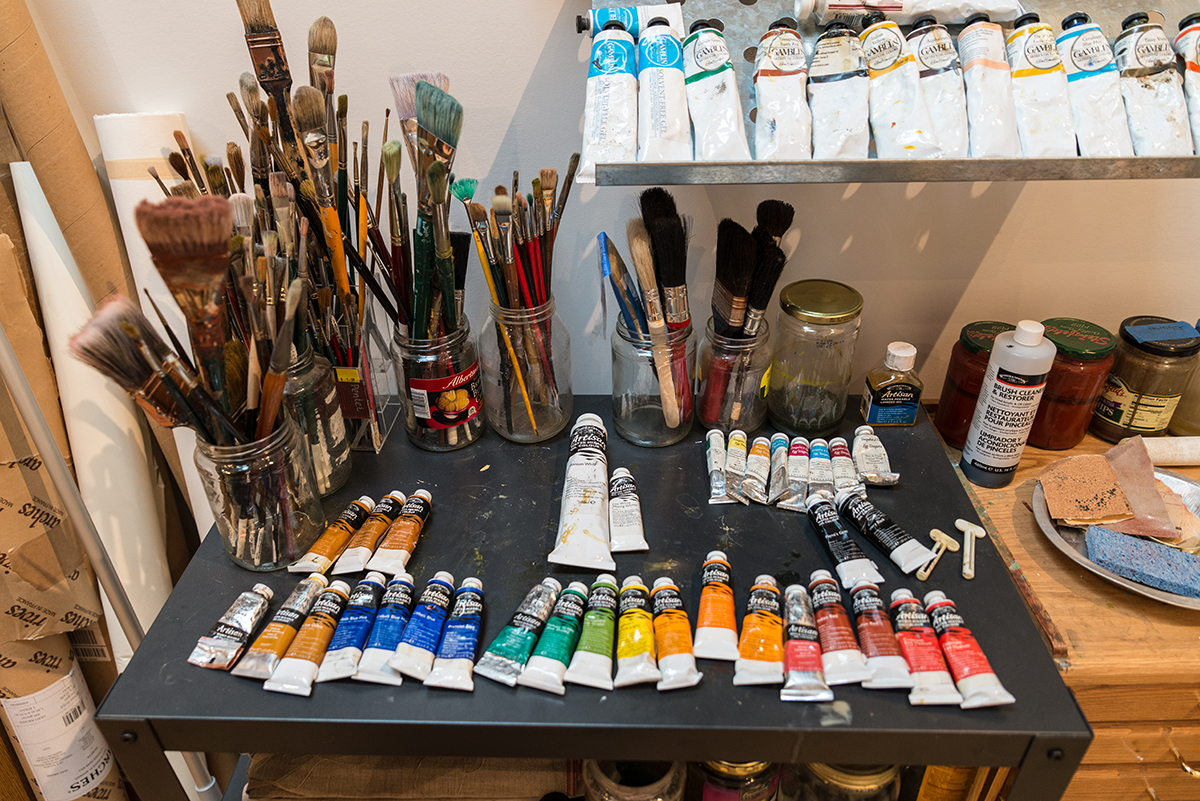
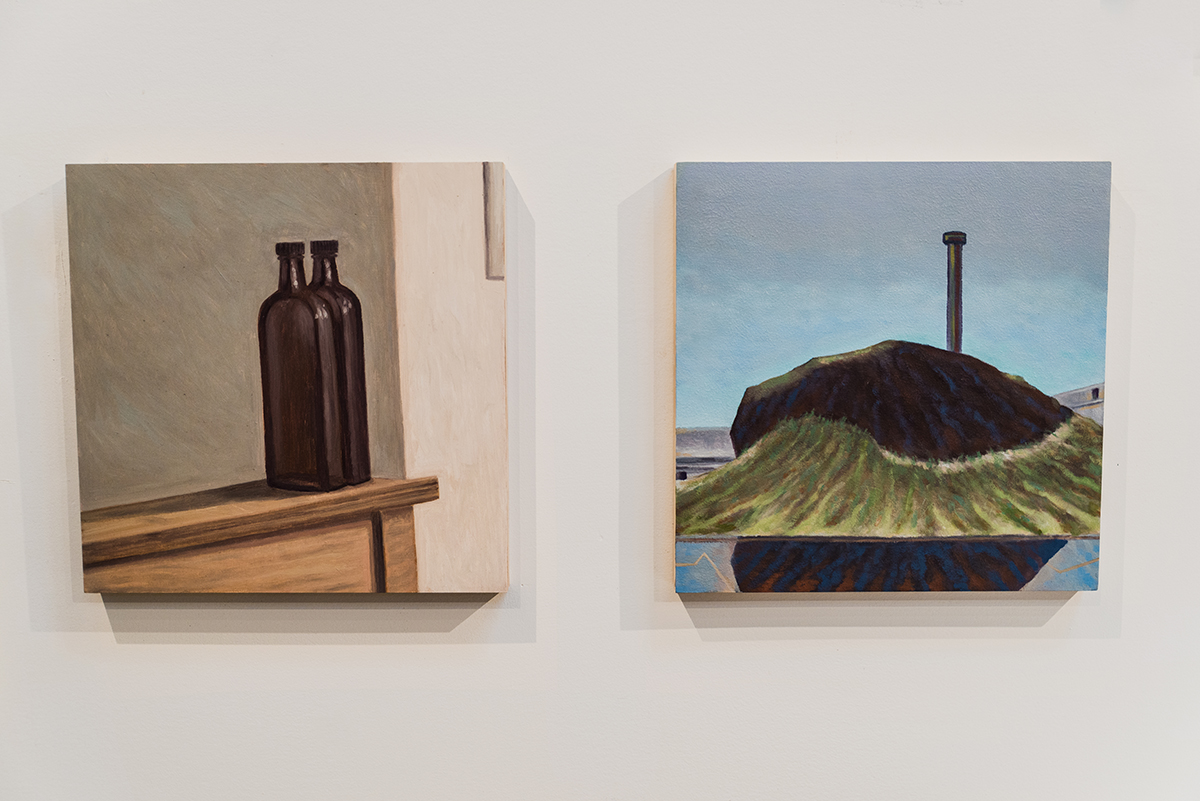
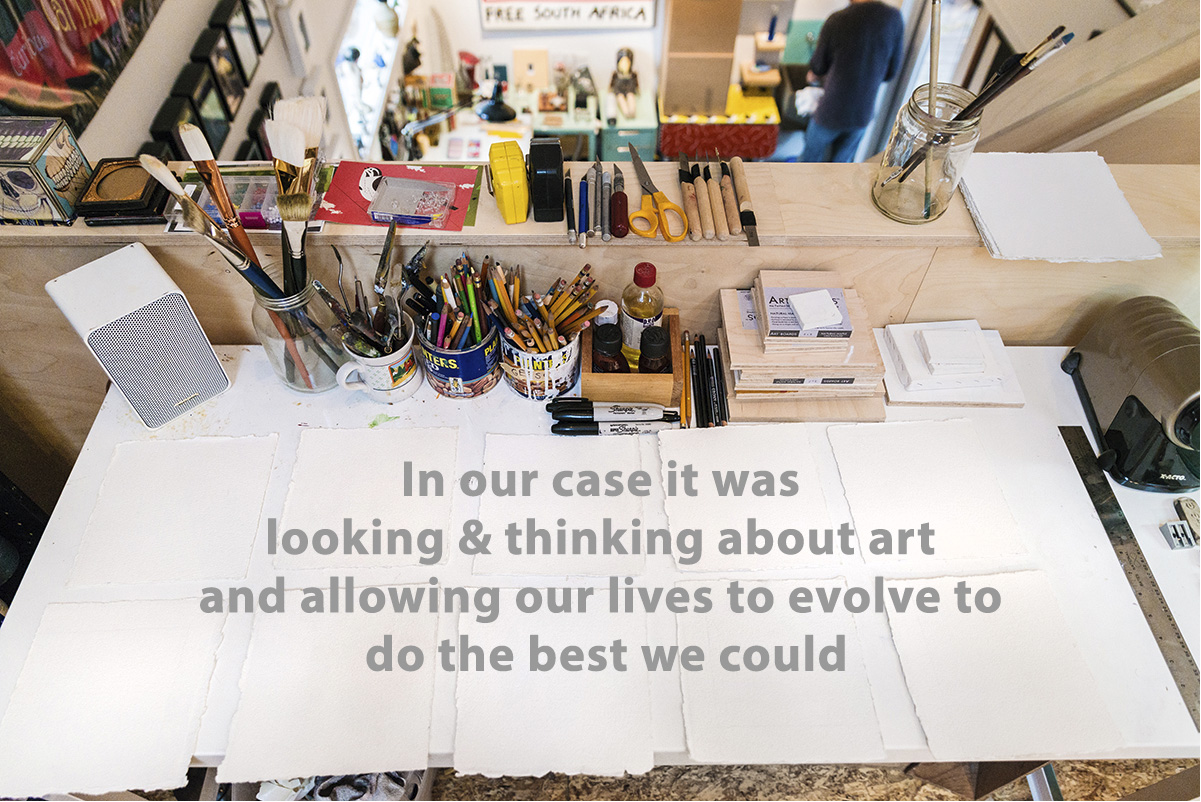
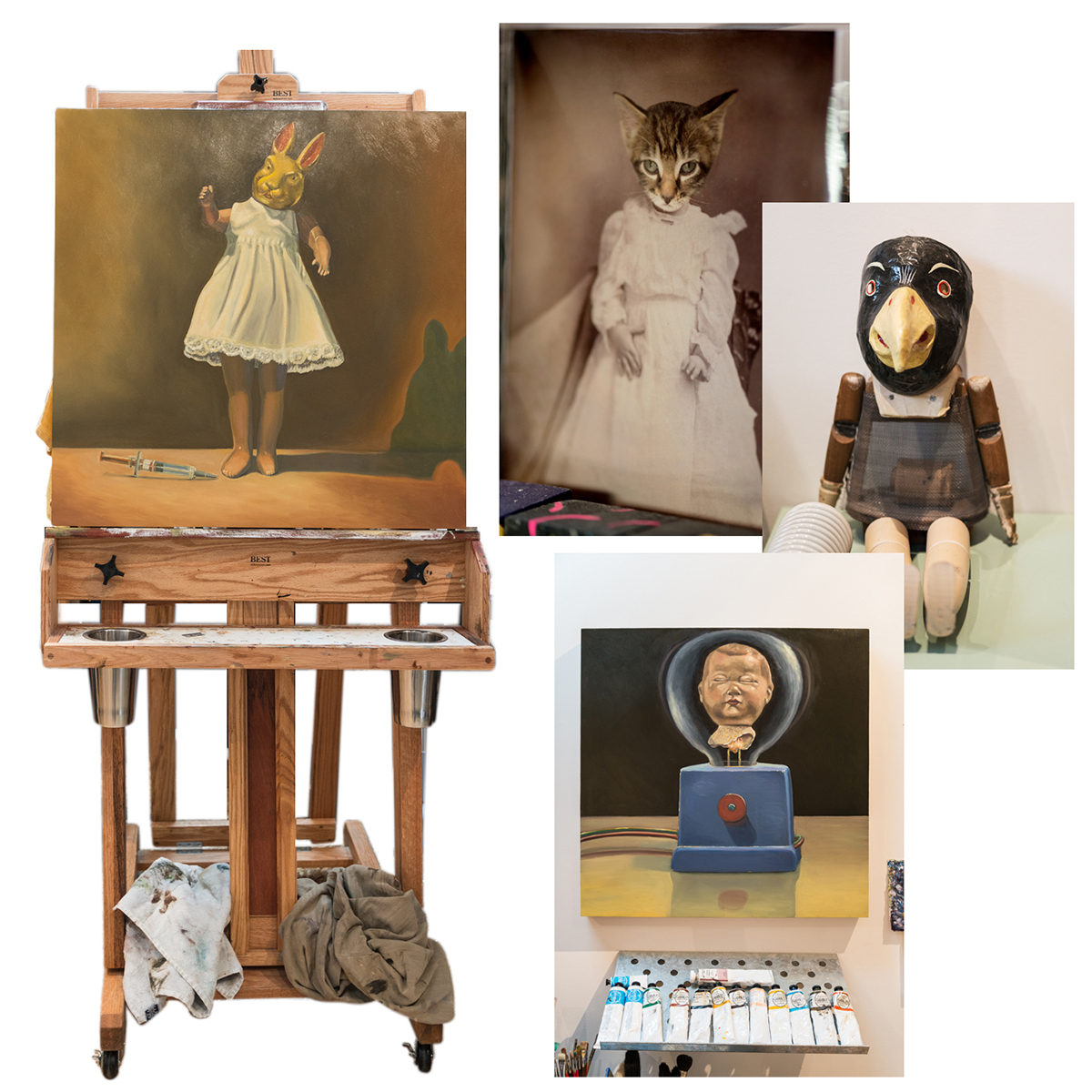
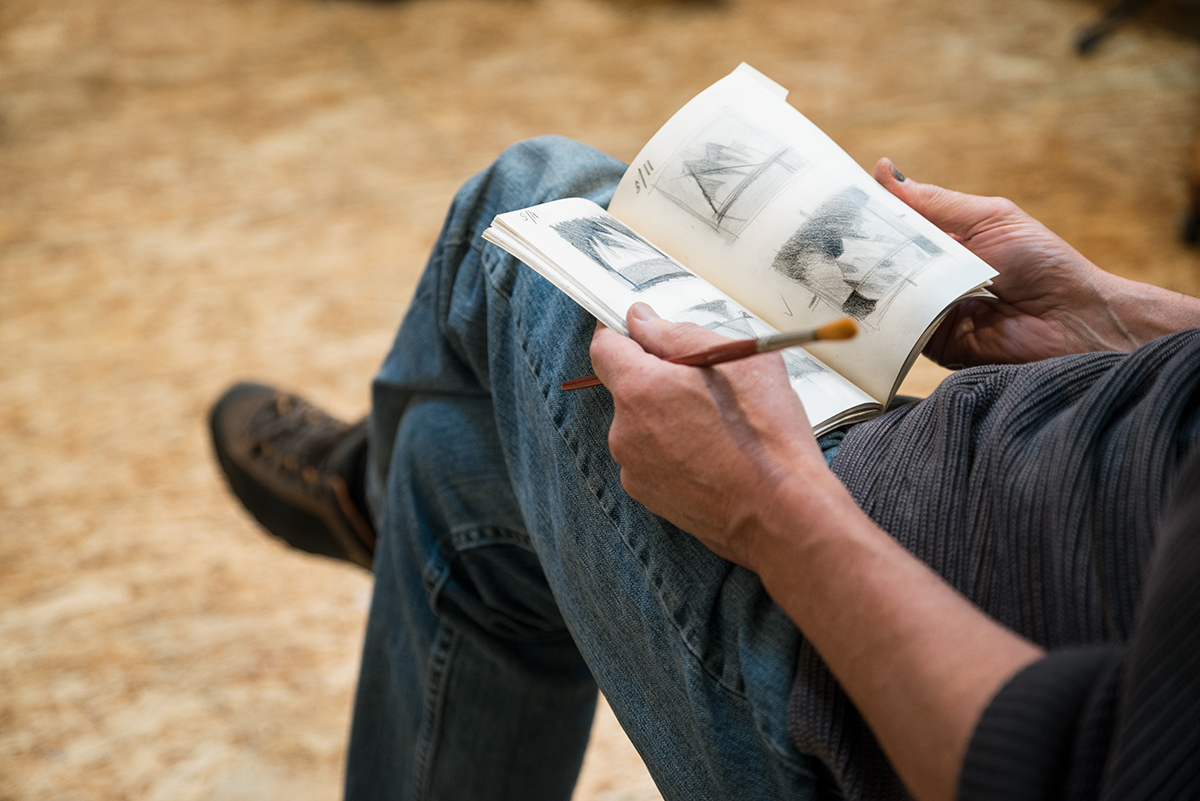
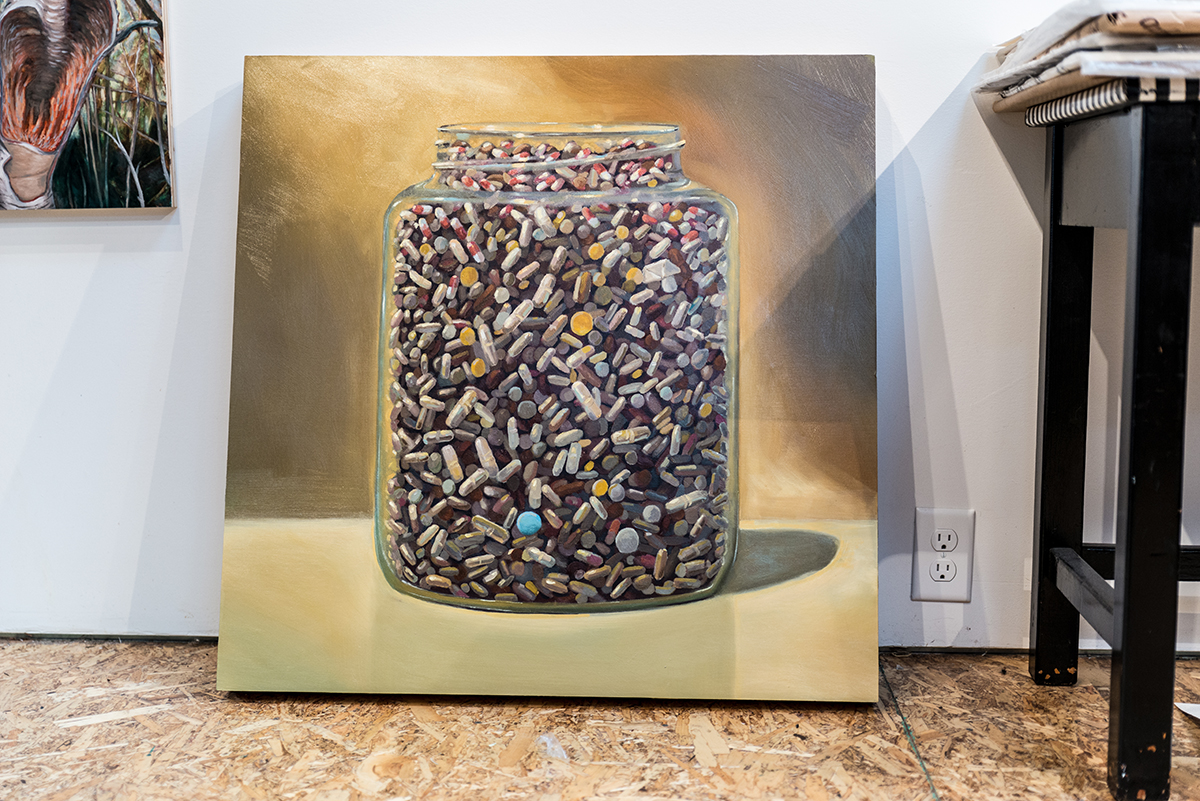
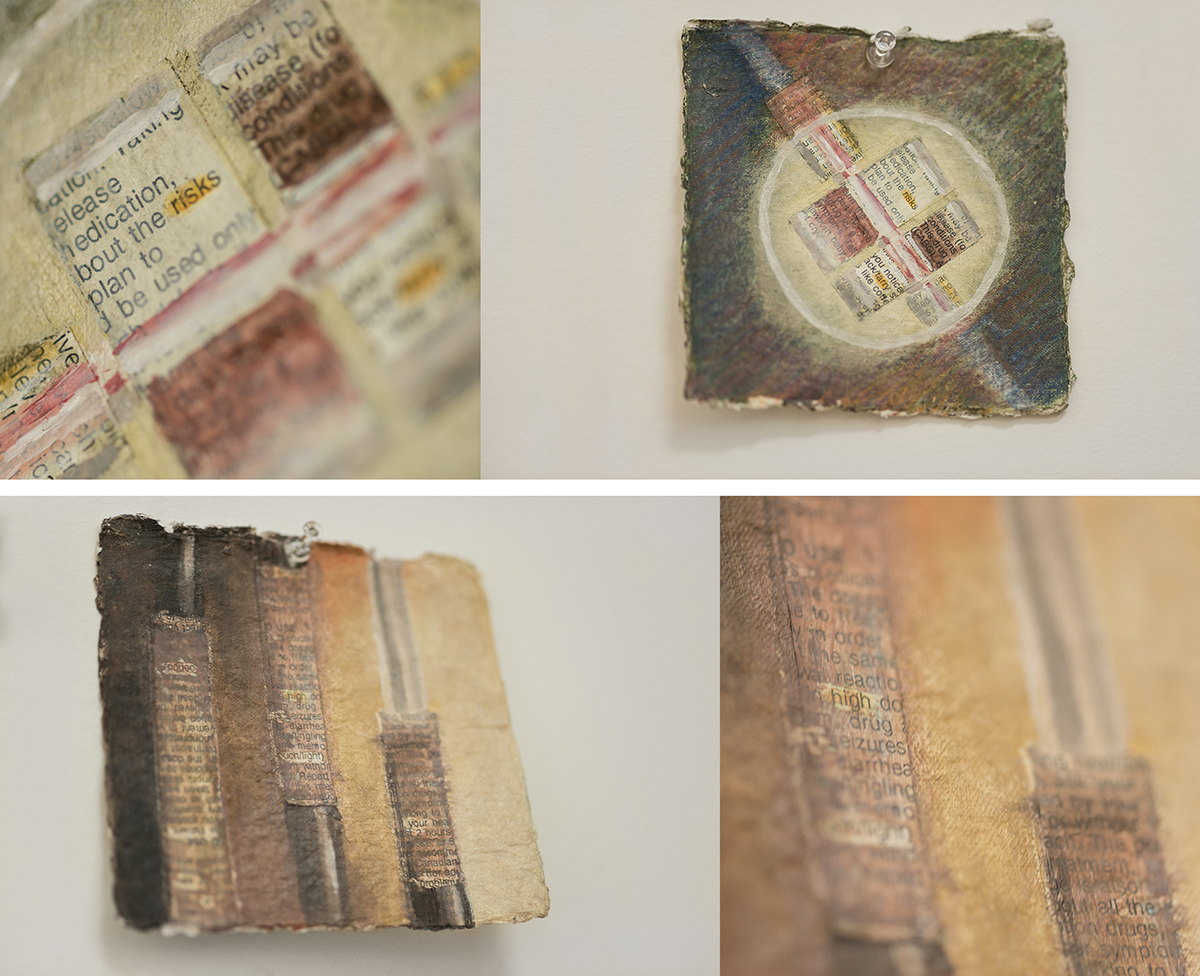
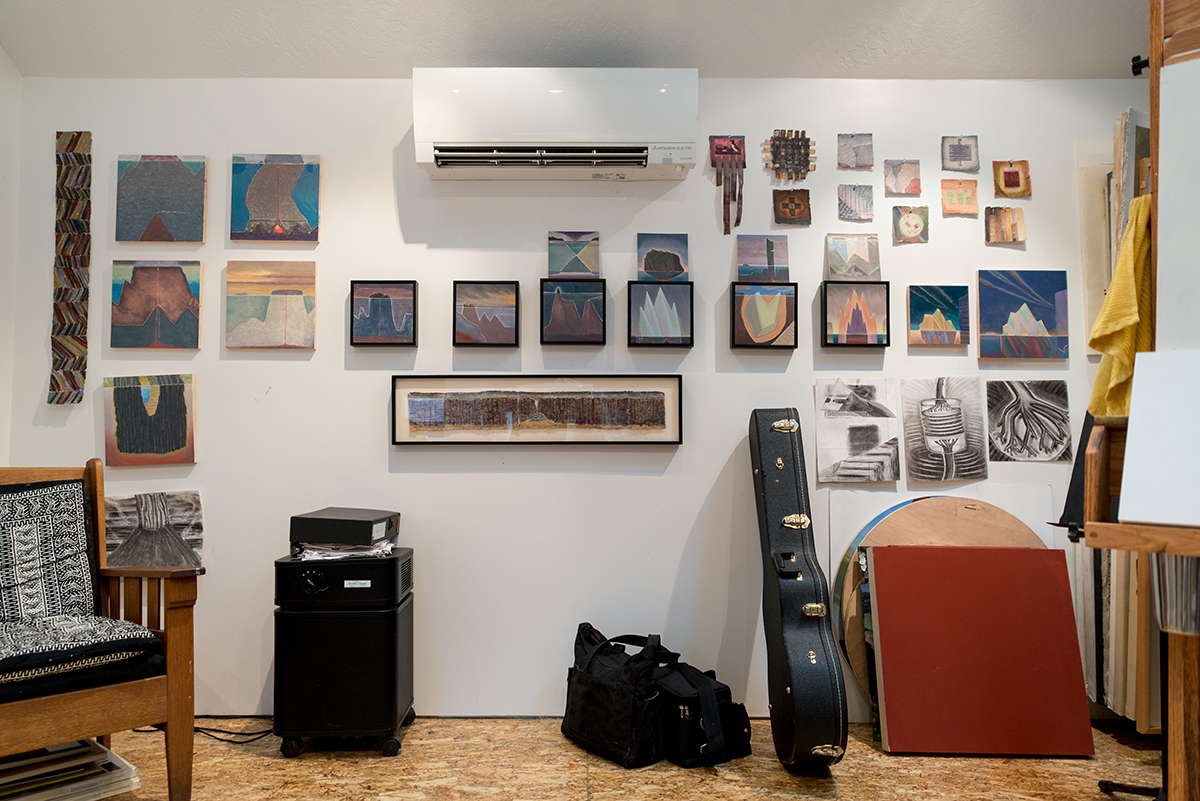
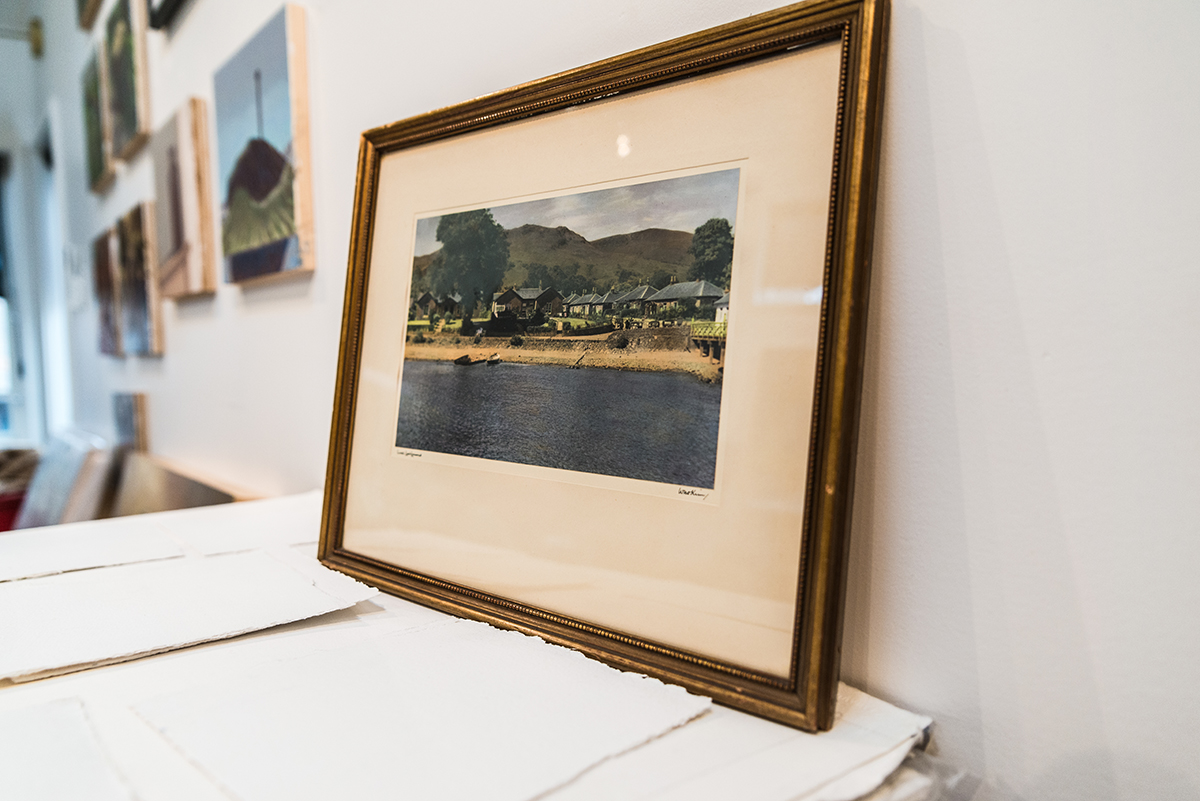
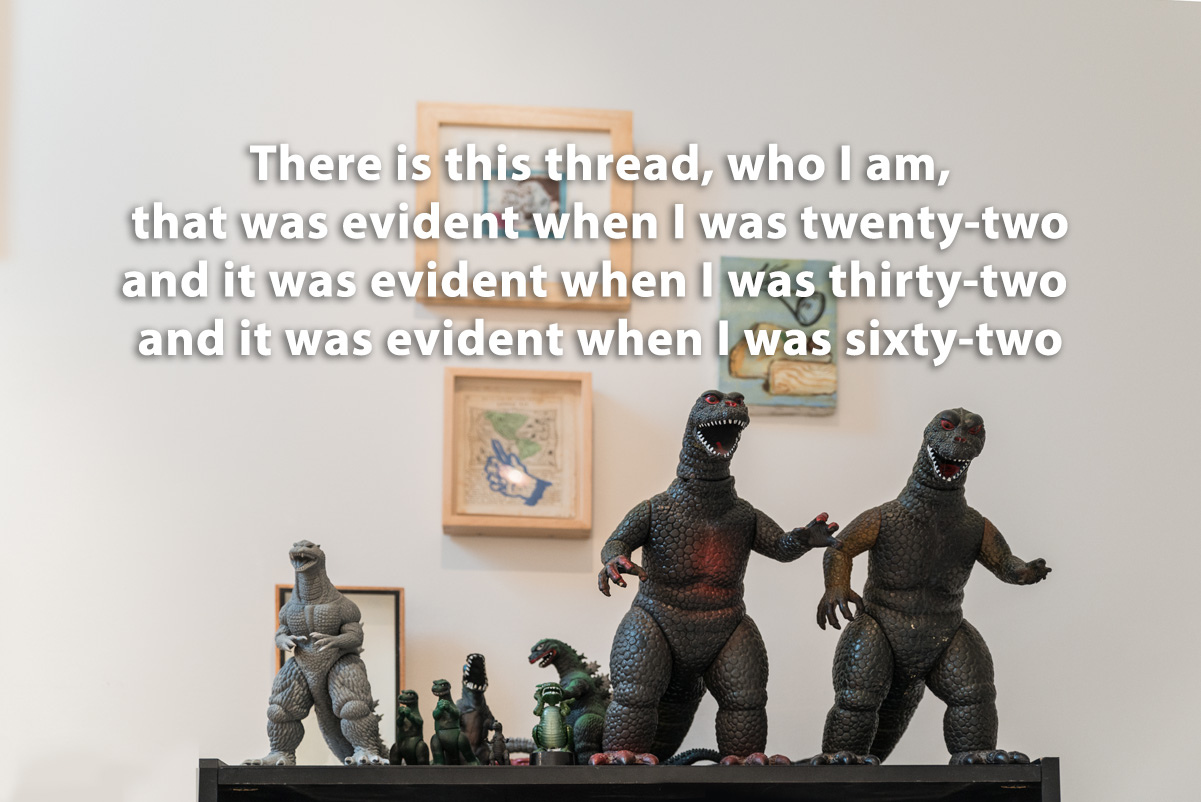
COMMENTS
Mark Utting says:
Great article. Thanks for sharing this. I really appreciated the parts on his relationship with Cheryl and your bringing it out
Jeff says:
Fantastic interview. I’d like to see more of Richard’s work.
Dawn Burke says:
What a wonderful article, so well written. I really enjoyed reading about my favorite professor ever! I’m glad he is doing well.
Carol Fry says:
What an insightful and beautiful interview, really loved reading it! Professor Young was one of my teachers at BSU and I really enjoyed his Painting class. Best Wishes
Professor Young and a Art Productive retirement.
Tracy says:
Thanks for the article, it’s always great to hear about Boise artists!